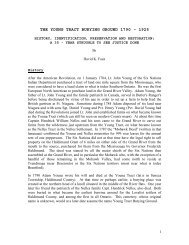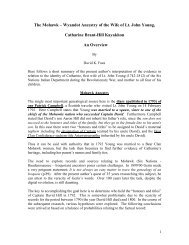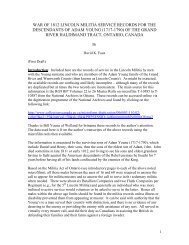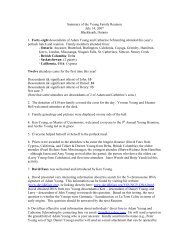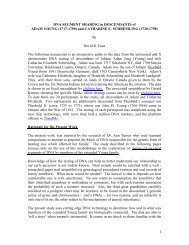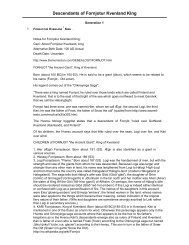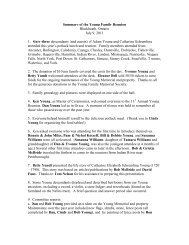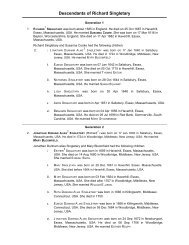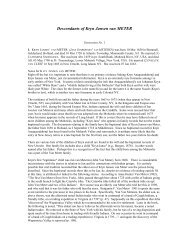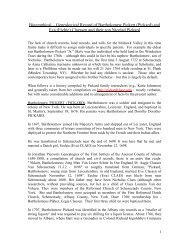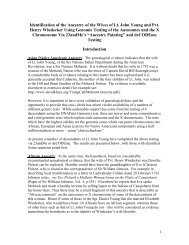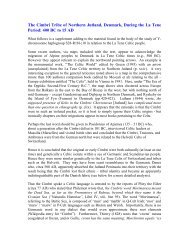Part 2 - Davidkfaux.org
Part 2 - Davidkfaux.org
Part 2 - Davidkfaux.org
Create successful ePaper yourself
Turn your PDF publications into a flip-book with our unique Google optimized e-Paper software.
Baden-WurttembergThe map above shows, for example, the important Hallstatt sites such as Heuneberg,Hochdorf and Hohenasperg which are all within what is today Baden-Wurttemberg. Todate this area is a major “hotspot” for U152, whereas the region to the west “should”sport a higher concentration due to the intrusions of Germanic peoples such as theAllamanni whose border with the Roman Empire at the time of Caesar was the Rhine.Hence it appears that a large aboriginal Celtic population remained in the area duringeven during the Germanic expansions and the subsequent Age of Migrations. They arelikely descendants of the Vendelici tribes (see below), as well as the Helvetii and alliedtribes (e.g., Raurici, Latobriges, Tulingi, Leuni and Boii).Below is a map of Bavaria showing the Celtic sites documented in that state. Clearlythere was a very heavy Celtic presence there, at least in the southern areas (below theDanube River) which remained under Roman control until the fall of the Empire in the 5 thCentury AD. The major tribe at the time of Caesar was the Vendelici (Vindeliker), whichwas composed of tribal units including the Briganti, Estionen, Licca, Cattanaten,Cosuaneten and Rucinaten. The Noricum tribes of Austria such as the Alaunen, as wellas the ubiquitous Boii were found in the east. It is likely that some of the Celts werepushed west, and others merged with the Germanic incomers.31



